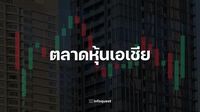Thailand's economy is teetering on the brink of a liquidity trap, according to economic experts who warn that despite a high level of liquidity in the banking system, funds are not circulating effectively within the economy. This phenomenon is attributed to a lack of demand both domestically and internationally, raising concerns about the nation’s economic recovery prospects.
On May 6, 2025, Sak Kaphaplong, an economic analyst, emphasized that Thailand is facing signs of a liquidity trap, where available funds fail to stimulate economic activity. He noted, "Currently, we are not in a liquidity trap, but we must acknowledge that we are very close to it. If the current situation persists, it could hinder the country’s recovery in the future." This warning is echoed by Dr. Omratep Javalak, Assistant Managing Director at CIMBT, who stated that while reducing interest rates can help existing loans, it does not necessarily facilitate new lending, which is crucial for economic growth.
Dr. Javalak pointed out that the reduction in interest rates has not significantly boosted lending this year, particularly among small and medium-sized enterprises (SMEs) facing structural issues. He explained that the slow growth in domestic demand has increased credit risks, leading financial institutions to be cautious in their lending practices. "The current credit risk environment, exacerbated by trade wars, has made banks hesitant to lend, which in turn stifles economic activity," he added.
Naris Sathaphaladej, Head of Data and Analytics at TTB, elaborated on the concept of a liquidity trap, describing it as a situation where high liquidity exists, but money fails to circulate within the economy due to a lack of demand from consumers and businesses. He noted that the banking sector currently holds approximately 6.8 trillion baht in liquidity, a record high, yet this wealth is not translating into spending or investment.
As the situation unfolds, Phiphit Aneknithi, Senior Manager at Kasikorn Bank (KBank), pointed out that the ongoing credit contraction is creating an atmosphere of uncertainty. He emphasized that many businesses are reluctant to invest due to the unpredictable economic landscape. Aneknithi stated, "The uncertainty stemming from the trade wars has led to a wait-and-see approach among banks regarding lending and investment." This cautious stance is reflected in the rising levels of non-performing loans (NPLs), which have reached 5,591 billion baht, marking a 2.3% increase since the previous year.
The NPL ratio has also risen to 2.42%, up from 2.35% in 2024, indicating that banks are becoming more conservative in their lending practices. This trend poses significant challenges for economic recovery, as banks tighten their lending criteria amid fears of rising defaults. According to a report, the growth of new loans has slowed, with banks focusing on managing risks rather than aggressively pursuing new business.
Meanwhile, the Asian stock markets reacted to the People's Bank of China (PBOC) announcing cuts in both the loan prime rate (LPR) and the reserve requirement ratio (RRR) for commercial banks, aiming to stimulate economic growth. On May 7, 2025, the Hang Seng Index in Hong Kong closed up by 111.24 points, while the Shanghai Composite Index gained 21.11 points. However, Japan's Nikkei Index saw a slight decline, closing down by 16.91 points.
The PBOC's decision to lower the RRR by 0.50%—the first cut of the year—will inject approximately 1 trillion yuan (about 1.389 billion US dollars) into the Chinese financial system. This move is expected to improve liquidity and stimulate economic growth amid ongoing trade tensions with the United States. Additionally, the PBOC has reduced the reverse repurchase rate by 0.10%, which will also affect the LPR, the main benchmark interest rate.
As the global economic landscape shifts, experts caution that Thailand must address its liquidity challenges to avoid slipping into a full-blown liquidity trap. The current environment of high liquidity coupled with low demand could lead to stagnation, where economic activity grinds to a halt.
In light of these developments, banks are expected to continue adopting a cautious approach. The focus will remain on managing risks and ensuring that the quality of their loan portfolios is maintained. As financial institutions navigate these uncertain waters, the need for effective fiscal measures to stimulate demand becomes increasingly critical.
In conclusion, the looming threat of a liquidity trap in Thailand underscores the importance of balancing monetary policy with proactive fiscal measures. As the economy grapples with these challenges, stakeholders must work collaboratively to foster a climate of confidence that encourages investment and spending.

